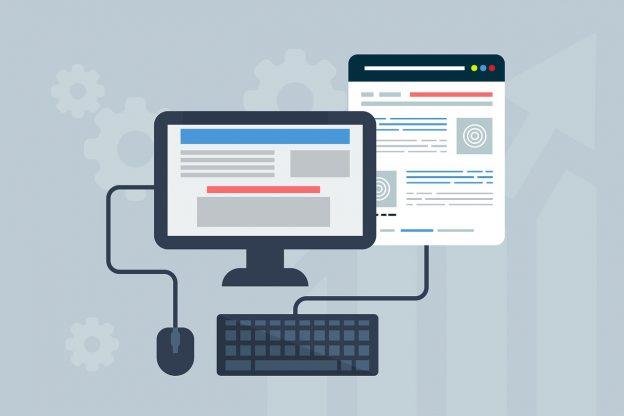The retro design draws its inspiration from the 50s and 60s. This style has long been an integral part of the design and modern technology.
The blend of old-style with new technologies creates a modern retro design that reminds us of past times. Web design trends are constantly changing, but one thing is for sure: retro design is simply amazing and it’s coming back!
Retro designs include different things like dynamic graphics, space travel, pin-up girls, old car designs. Retro web design is distinguished by the unique features that make it so adorable and demanded.
In this article, we will tell you about the top 6 characteristic elements of this unique style.
1. Use of colors
Talking about the retro-style, the colors used for the design were rather limited, as full-color printing was quite expensive. Thus, designers had to limit their choice of colors and focus on tinted coloration.
Two-tone coloring is usually enough for retro web design. Sometimes, on the contrary, designers choose the focal color and mix it with a small number of selected colors. Sometimes they get a unique and outstanding theme, for example, for wedding design.
When designing a website, you can use the classic black and white color combination or concise coffee and sand shades with a yellow “old touch”. Inclusions of gray and neutral pastel tones are also allowed.
2. Typography
One of the amazing aspects of retro design is the elegance of classic typography combined with italics and Sans-Serif, well-thought-out layouts and combinations of textures and illustrations that relate to the techniques used throughout the early 20th century.
A feature, in this case, is simplicity, font positioning, duplication and pixel strokes that add uniqueness and reflect the taste of the master.
Fine print fonts with elongated elements and the effect of shadows and a variety of contours will decorate both the main page and the rest of the content. The use of shadows and contours creates the effect of embossing – the letters look more voluminous and create a feeling that you can touch them and feel the dense roughness of the paper with your fingertips!
3. Emblems and logos
Retro style is a popular choice of web and graphic designers! As we all know, emblems and logos are very important for any brand and, in the process of their creation, retro-style proves that its methods and presentation are unique. Using subtle and contrasting colors will help create amazing retro logos and emblems.
As a rule, retro-style emblems have round shapes and developing elements near, above or below them. Refined, contrasting colors are an important detail. They are clearly visible, readable and understandable at once!
4. Textures
Light, soothing noise textures, subtle patterns in the background of the page visually create an attractive retro style that even today won’t look like something obsolete, dull and forgotten.
Some craftsmen use the texture of the canvas, others – plain colors with fine lines and strokes. Designers often use worn-out textures (for example, black-and-white photographs or photographs with a touch of yellow and worn edges).
5. Borders and separators
Borders are not only a vital part of the retro design but also an exciting element to work with!
In order to frame a picture, highlight content, or to isolate different objects, to crop images, create areas and sections, you need to draw borders. They should be consistent with the overall design. When developing retro designs, you can’t underestimate the importance of borders, as they can create or spoil the whole purpose of your efforts.
Borders and separators can be created in a solid color or have a decorative design. Feel free to experiment with these elements!
6. Forms and illustrations
The retro design consists of simple shapes and illustrations of various sizes. Such elements attract attention and allow you to adapt the page space to separate different objects and create an emphasis on content.
Designers can use circles of different sizes to create a stunning design. Bright colors are used here to attract attention.
It is necessary to focus on the use of simple geometric shapes. No complicated polygonal elements allowed! Most often, designers avoid using even square shapes, preferring to use ovals and circles with the decor in the form of stylized ribbons. For example, this can be a background in the form of vintage postal stamps.
Designers can endlessly experiment with images and photographs of that period of time (by the way, Pin Up style beneficially and effectively characterizes the retro style in modern implementation). It can be not only background images of cars, postage stamps, and other things but also such elements as wide frames and patterns. You can use both color and etching images.
Wanna get more inspiration? Check best website templates for your perfect 2019 website.

